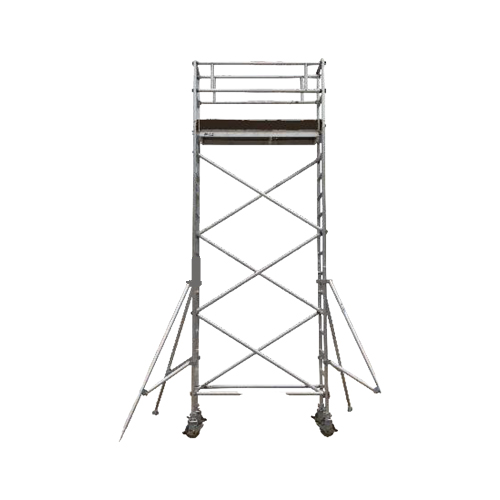Aluminum scaffolding’s dependable structure plays an important part in the building sector. Aluminum scaffolding ladders are lightweight, easily transportable, and most importantly cost efficient. Aluminum tubes and boards may be used to construct the scaffolding tower. In many ways using Aluminum Scaffolding is beneficial.
Why Should You Use Aluminum Scaffolding?
Lighter and Enduring
Aluminum is much more lightweight than steel. This has several advantages across the board. Steel is more difficult to carry, move, and construct. It may also eliminate the need for cranes and other expensive lifting equipment, because most of the lifting may be performed manually.
Best Weight to Strength Ratio
The strength-to-weight ratio quantifies the capacity of a material to support its own weight. Imagine that two long, solid metal poles of equal diameter are constructed next to one another, one from steel and the other from aluminum. Because aluminum has a far better strength-to-weight relation than steel, the aluminum pole may be made much taller than the steel pole before collapsing under its own weight. This immediately applies to scaffolding, particularly applications such as aluminum scaffold towers, which may be constructed to a lower ultimate weight using aluminum than steel, so long as the required load is considered.
Better Maneuverability
Maneuverability is always a goal on the job site; the more it is, the more quickly and efficiently work may be performed. From the perspective of a construction worker, ease of mobility and transportation decreases stress and conserves energy. Injuries caused by strain or falls are less likely to occur with lightweight aluminum than with heavy steel. Heavy steel platforms exacerbate this problem. For enhanced safety and peace of mind, platforms with reduced weight and equivalent strength are unquestionably desirable, and aluminum scaffolding makes this possible.
Less Risk of Oxidation
Scratches under the surface of aluminum generate a thin oxide layer that prevents further degradation. This implies that any surface damage, as long as it is not structural, successfully protects itself. In contrast, oxidation (i.e. rust) is a considerably greater worry with steel and may rapidly lead to structural integrity concerns. Corrosion-related failures need regular and thorough inspections of steel scaffolding for symptoms of deterioration.
General Guide for Scaffolds
Supervision under an Expert
No scaffold may be raised, transported, disassembled, or changed in any way without the direct supervision of qualified individuals at all times. A person is considered to be competent if they are able to recognize potential, actual, or foreseeable dangers in their environment or in their working circumstances, and if they are also authorized to take immediate remedial action in order to remove these dangers.
Utilization of Non-mobile Welded Frame
The frame scaffold has to have the capacity to sustain loads that are four times more than the maximum load that is designed for it. In the event that guardrails are not used to prevent access to the area, the maximum allowable plank extension over the end support must not exceed 12 inches. This requirement applies when using a horizontal frame separation distance of seven feet.
Overlapping of Frames
The required amount of overlap for each plank placed on top of the other on a broad frame scaffold with 10 sections is 12 inches. A scaffold that is five feet wide, thirty-five feet long, and thirty feet high and has a frame spacing of seven feet has to have horizontal securement every twenty feet and vertical securement every twenty feet.
Scaffolding Rails
On welded frame scaffolds that are 10 feet high or more, guardrails are a mandatory safety feature. At a minimum of 36 inches and at most 45 inches in height, the top rail must be installed. When it comes to scaffolds with welded frames, the required strength is at least 200 pounds. When using a scaffold with a welded frame, the mid-rail strength has to be at least 150 pounds. The legs of the scaffold have to bear on base plates, and those base plates have to rest either on solid foundations or mudsills.
Planks for Scaffolding
There should not be more than one inch of gap between each board of the scaffolding. Nine inches is the smallest amount of space that may be left between a plank and an upright the frame. A plank on an unelevated scaffold has to extend over the end in order to provide support for at least six inches.
Conclusion
FMA Factory, the best aluminum scaffolding supplier in Qatar, has various types of aluminum components for aluminum scaffolding. When the scaffolding is destroyed due to a variety of factors, it is necessary to replace these components with new ones, which you can discover on our website. All of our products are examined at our facility to guarantee that they fulfill the required security standards. However, if you are searching for the greatest aluminum scaffolding for sale company, FMA Factory is the answer.

